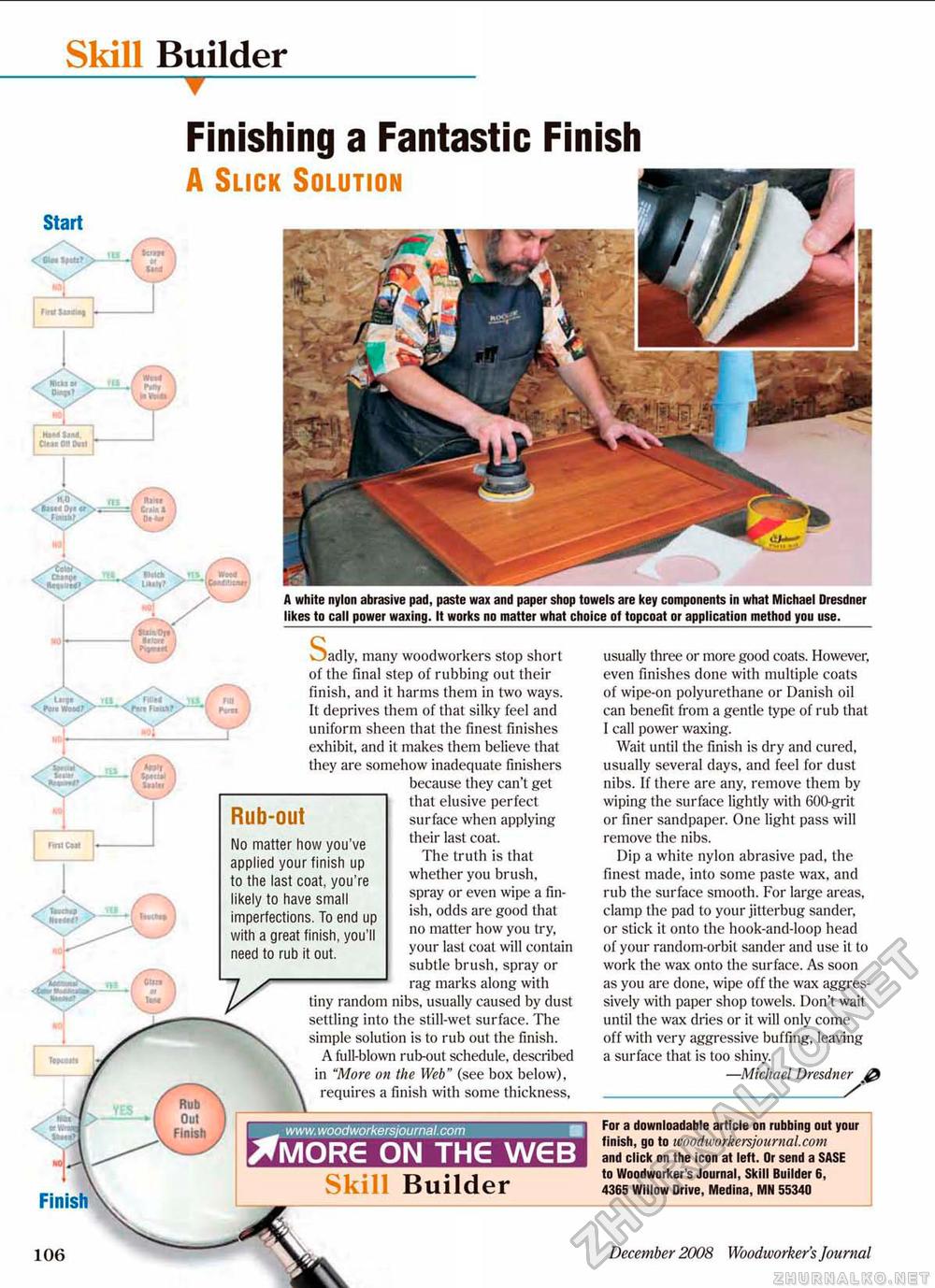Woodworker's Journal 2008-32-6, страница 107
^MORG ON THG WGB A white nylon abrasive pad, paste wax and paper shop towels are key components in what Michael Dresdner likes to call power waxing, it works no matter what choice ol topcoat or application method you use. usually three or more good coats. However, even finishes done with multiple coats of wipe-on polyurethane or Danish oil can benefit from a gentle type of rub that 1 call power waxing. Wait until the finish is dry and cured, usually several days, and feel for dust nibs. If there are any, remove them by wiping the surface lightly witli 600-grit or finer sandpaper. One light pass will remove the nibs. Dip a white nylon abrasive pad, the finest made, into some paste wax, and rub the surface smooth. For large areas, clamp the pad to your jitterbug sander, or stick it onto the hook-and-loop head of your random-orbit sander and use it to work the wax onto the surface. As soon as you are done, wipe off the wax aggressively with paper shop towels. Don't wait until the wax dries or it will only come off with very aggressive buffing, leaving a surface that is too shiny. —Michael Dresdner A Skill Builder Skill Builder For a downloadable article on rubbing out your finish, go to twodworkersjournal.com and click on the icon at left. Or send a SASE to Woodworker's Journal, Skill Builder 6, 4365 Willow Drive, Medina, MN 55340 Finishing a Fantastic A Slick Rub-out No matter how you've applied your finish up to the last coat, you're likely to have small imperfections. To end up with a great finish, you'll need to rub it out. - 5adly, many woodworkers stop short of the final step of rubbing out their finish, and it harms them in two ways. It deprives them of that silky feel and uniform sheen that the finest finishes exhibit, and it makes them believe that they are somehow inadequate finishers because they can't get that elusive perfect surface when applying their last coat. The truth is that whether you brush, spray or even wipe a finish, odds are good that no matter how you try, your last coat will contain subtle brush, spray or rag marks along with tiny random nibs, usually caused by dust settling into the still-wet surface. The simple solution is lo rub out the finish. A full-blown rub-out schedule, described in "More on the Web" (see box below), requires a finish with some thickness, ficUCftM 106 December 2008 Woodworker's Journal |







